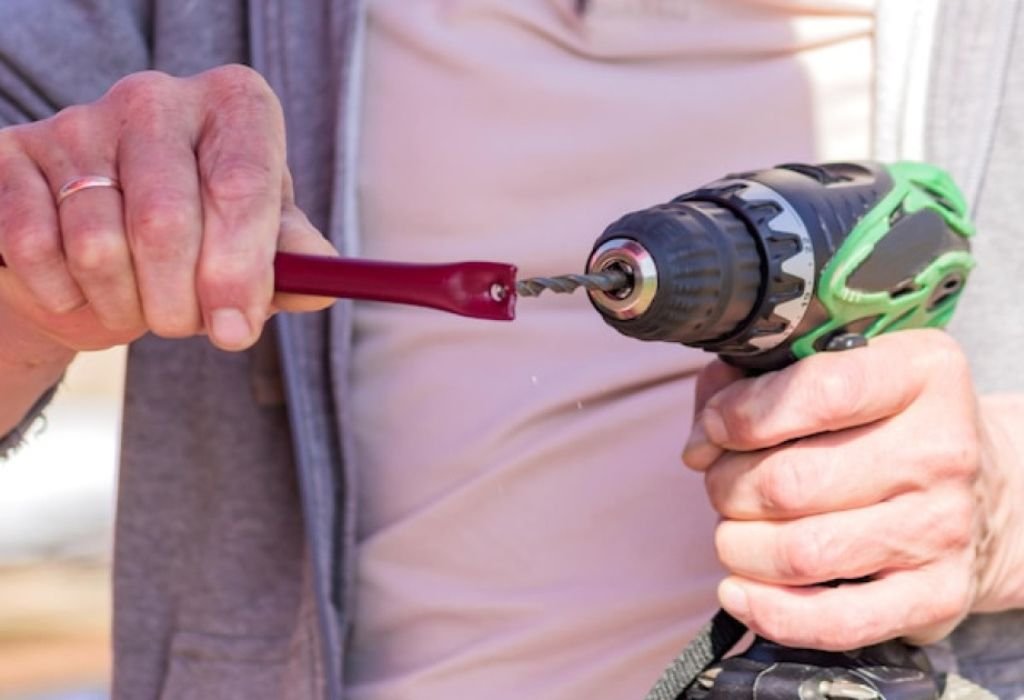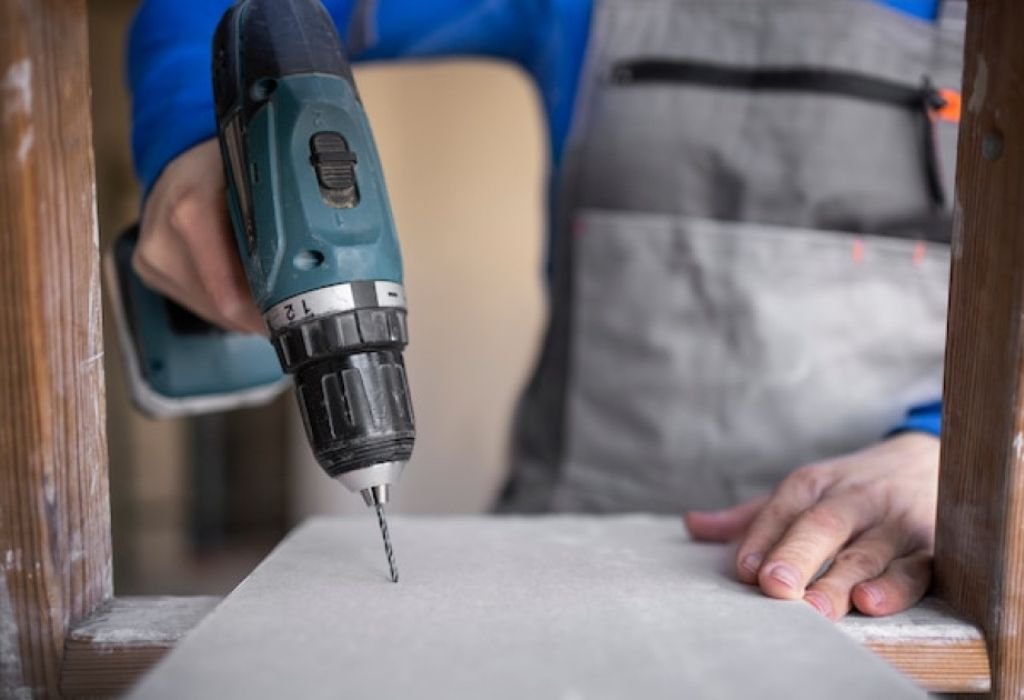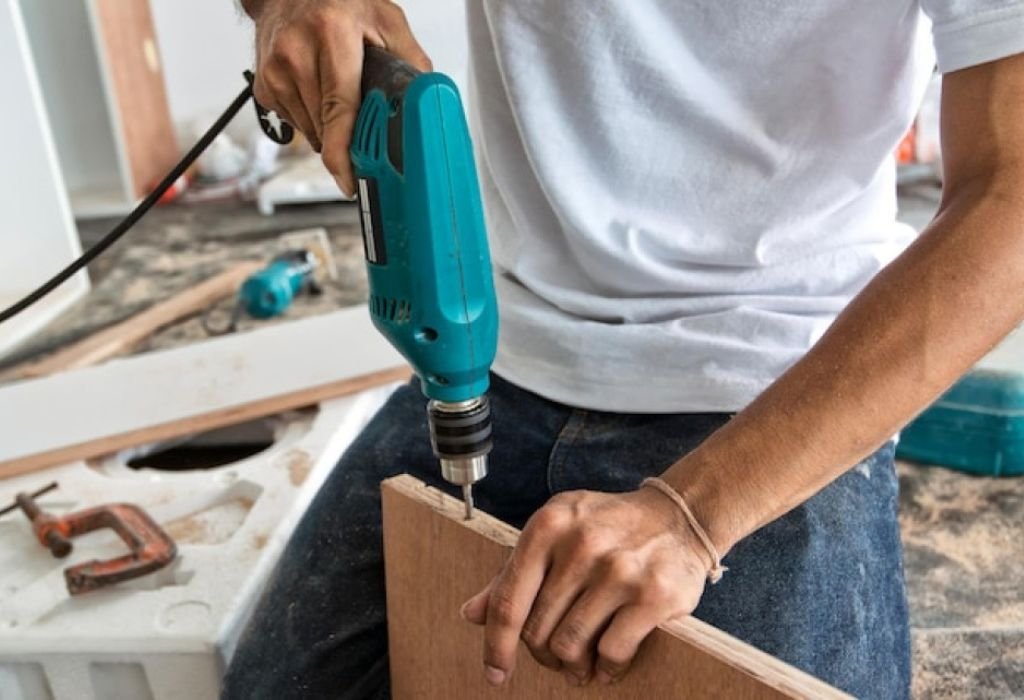A DIYer crouches beside a car, trying to loosen a stubborn lug nut with a compact impact driver. The tool whirs loudly, but the nut refuses to budge.
The question soon arises: can you use an impact driver as an impact wrench when the job demands serious torque. Many tool users confuse the two, assuming they serve the same purpose.
At first glance, impact drivers and impact wrenches look similar. Both use concussive force to drive or loosen fasteners, but their design and power levels differ dramatically.
Impact drivers are built for screws, small bolts, and fasteners. Impact wrenches are designed for heavy-duty work like lug nuts, machinery bolts, and industrial anchors.
The global power tools market surpassed $50 billion in 2023, reflecting the importance of selecting the right tool for the job (Grand View Research). Buyers often face the decision between compact drivers and high-torque wrenches.
According to Family Handyman, most impact drivers generate around 1,000–1,800 in-lbs of torque, while impact wrenches can exceed 10,000 in-lbs. This performance gap explains why one cannot always substitute for the other (Family Handyman).
Using the wrong tool risks stripped bolts, damaged sockets, or even tool failure. For professionals and DIYers, knowing when substitution is possible and when it is not saves time and money.
This guide explores the differences between impact drivers and impact wrenches. By the end, you will know when substitution works, when it fails, and why having both tools may be the best solution.
Can You Use an Impact Driver as an Impact Wrench?

Yes, you can use an impact driver as an impact wrench, but only for light-duty applications. With the right socket adapter, it can handle small bolts and screws.
However, an impact driver is not designed for heavy-duty jobs. Attempting to remove lug nuts or industrial bolts usually ends in failure or tool damage.
Can you use an impact driver as an impact wrench?
Yes, but only for light-duty work.
Is it good for lug nuts?
No, it lacks the torque.
Can adapters make it work?
Yes, for small fasteners.
Is it safe for heavy-duty jobs?
No, it risks damaging the tool.
Key Differences Between Impact Drivers and Impact Wrenches
Impact drivers use a 1/4-inch hex collet designed for screwdriver bits and small sockets. Impact wrenches use larger square drives, typically 3/8-inch or 1/2-inch.
Torque output is another major difference. Impact drivers average 1,000–1,800 in-lbs, while impact wrenches can exceed 10,000 in-lbs.
What size collet does an impact driver use?
A 1/4-inch hex.
What size drive does an impact wrench use?
3/8-inch or 1/2-inch.
Which has more torque?
Impact wrenches by a wide margin.
Which is better for construction?
Impact drivers for screws and bolts.
When Can an Impact Driver Replace an Impact Wrench?
Impact drivers can replace impact wrenches in light automotive work, such as tightening small bolts inside the car. They also work for household assembly tasks with socket adapters.
For brackets, furniture, or appliances, an impact driver is often good enough. In emergencies, it can substitute temporarily, but it will not deliver the torque of a true impact wrench.
Can it replace a wrench for cars?
Only for interior bolts.
Can it drive small fasteners?
Yes, with adapters.
Is it good for emergency use?
Yes, but only short-term.
Does it work for large bolts?
No, it lacks sufficient power.
Risks of Using an Impact Driver Instead of an Impact Wrench

Using an impact driver on heavy bolts risks stripping threads or breaking sockets. The tool may also overheat from prolonged strain.
Frequent misuse reduces the lifespan of the impact driver. There is also a risk of injury if the bit or socket slips under high pressure.
Can it strip bolts?
Yes, if underpowered.
Can it overheat?
Yes, during heavy-duty use.
Does it damage the tool?
Yes, over time.
Is it dangerous?
Yes, slipping can cause injury.
Advantages of Using the Right Tool
Choosing the correct tool ensures safety and efficiency. Impact drivers excel in woodworking, cabinetry, and general construction.
Impact wrenches shine in automotive and industrial settings. Using each tool for its intended purpose prevents wasted effort and tool damage.
Why choose the right tool?
It ensures proper results.
Are impact drivers versatile?
Yes, for many fastening tasks.
Are impact wrenches powerful?
Yes, for heavy-duty bolts.
Do pros use both?
Yes, depending on the task.
Professional Recommendations
Professionals recommend using an impact driver for screws, lag bolts, and small fastening jobs. For lug nuts, structural bolts, or machinery, an impact wrench is the only safe option.
If budget allows, owning both tools covers every scenario. A driver for precision fastening and a wrench for heavy-duty work makes a complete kit.
Do pros use drivers for lug nuts?
No, they use wrenches.
Should I invest in both tools?
Yes, for versatility.
Does torque matching matter?
Yes, it prevents damage.
Are adapters enough?
Only for light use.
Market Trends in Impact Tools

Brushless motors are improving both drivers and wrenches. They deliver more torque, better efficiency, and longer lifespan.
Compact impact wrenches are gaining popularity for homeowners. Combo kits that pair drivers with wrenches are also widely available.
Are brushless tools better?
Yes, more efficient and durable.
Are compact wrenches popular?
Yes, especially for DIY mechanics.
Do combo kits exist?
Yes, many brands sell them.
Is demand growing?
Yes, in both DIY and pro markets.
Conclusion
The answer to can you use an impact driver as an impact wrench is yes, but only for light-duty applications. With adapters, drivers can handle small bolts, but they are not built for automotive or industrial work.
Impact drivers are best for screws, lag bolts, and light assembly. Impact wrenches provide the torque required for lug nuts, construction, and machinery.
Using the right tool prevents damage, saves time, and ensures safety. For serious projects, keeping both tools is the best long-term solution.

I’m John F. Nicholas, the founder, lead writer, and drill enthusiast behind 101drill.com. With years of hands-on experience in power tools and DIY projects, I created this platform to share practical knowledge, expert tips, and real-world insights to help others master the art of drilling.
